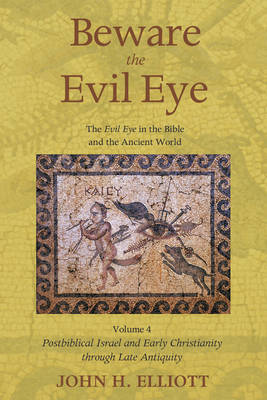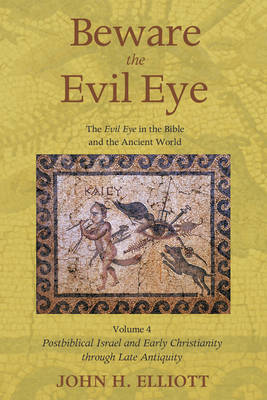
Door een staking bij bpost kan je online bestelling op dit moment iets langer onderweg zijn dan voorzien. Dringend iets nodig? Onze winkels ontvangen jou met open armen!
- Afhalen na 1 uur in een winkel met voorraad
- Gratis thuislevering in België vanaf € 30
- Ruim aanbod met 7 miljoen producten
Door een staking bij bpost kan je online bestelling op dit moment iets langer onderweg zijn dan voorzien. Dringend iets nodig? Onze winkels ontvangen jou met open armen!
- Afhalen na 1 uur in een winkel met voorraad
- Gratis thuislevering in België vanaf € 30
- Ruim aanbod met 7 miljoen producten
Zoeken
Omschrijving
This first full-scale study of the Evil Eye in the Bible and the biblical communities has traced in four volumes evidence of Evil Eye belief and practice in the ancient world from Mesopotamia (c. 3000 BCE) to Late Roman Antiquity (c. 600 CE). The fourth and final volume considers the literary and material evidence of the unabated thriving of Evil Eye belief and practice in Israel following the destruction of the Jerusalem temple in 70 CE (chapter 1) and in early Christianity (chapter 2) through Late Antiquity (500-600 CE), with a brief reference to Evil Eye lore in early Islam. Numerous cross-references relate the subject matter of this volume to that of the previous three. A concluding Epilogue (chapter 3) offers some final thoughts on this survey of Evil Eye belief and practice in antiquity and their role in conceptualizing and combatting the pernicious forces of evil in daily life. Beside presenting the first full-scale monograph on the Evil Eye in the Bible and the biblical communities (volumes 3 and 4), the volumes summarize a century of research since the milestone two-volume study of Siegfried Seligmann, Der bose Blick und Verwandtes (1910), and they describe the ecological, historical, social, and cultural contexts within which the biblical texts are best understood. Throughout the study, the Evil Eye in antiquity is treated not as an instance of vulgar superstition or deluded magic, but as a physiological, psychological, and moral phenomenon whose operation was deemed explicable on rational grounds.
Specificaties
Betrokkenen
- Auteur(s):
- Uitgeverij:
Inhoud
- Aantal bladzijden:
- 242
- Taal:
- Engels
Eigenschappen
- Productcode (EAN):
- 9781498230728
- Verschijningsdatum:
- 25/04/2017
- Uitvoering:
- Paperback
- Formaat:
- Trade paperback (VS)
- Afmetingen:
- 152 mm x 226 mm
- Gewicht:
- 358 g

Alleen bij Standaard Boekhandel
+ 86 punten op je klantenkaart van Standaard Boekhandel
Beoordelingen
We publiceren alleen reviews die voldoen aan de voorwaarden voor reviews. Bekijk onze voorwaarden voor reviews.











